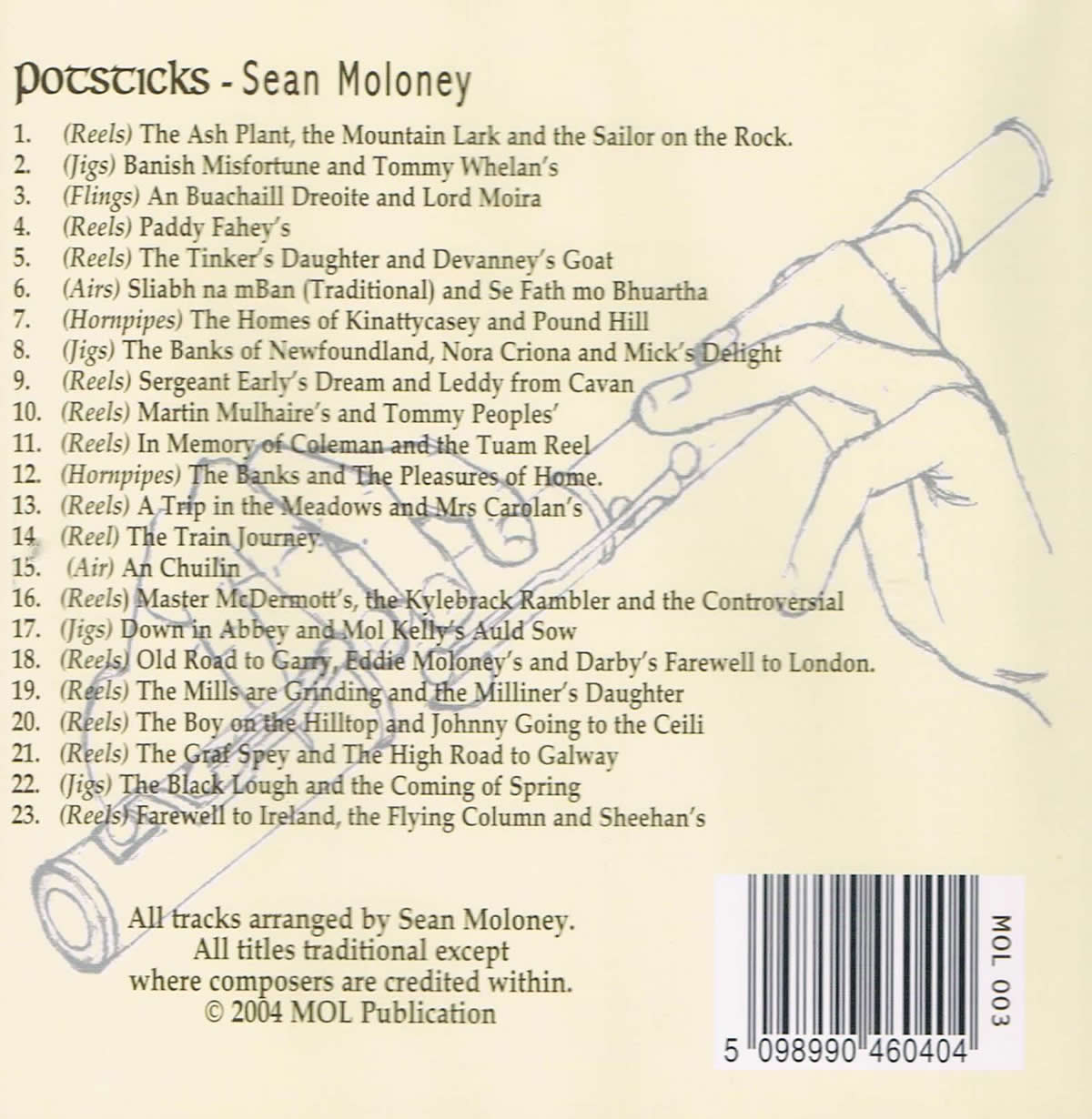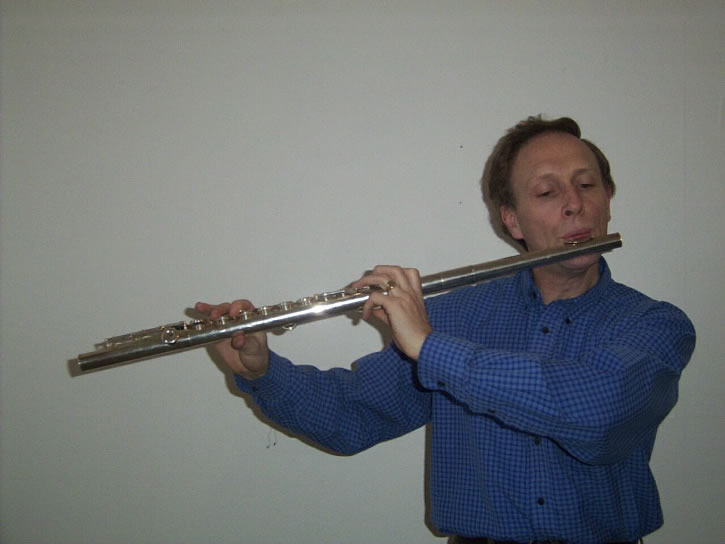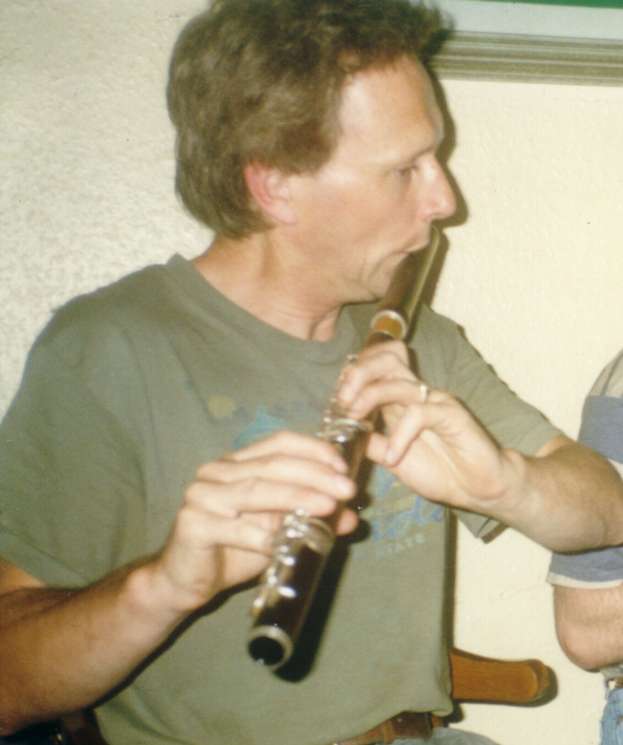Seán Moloney
Traditional Irish Flautist




|
1. (Reels) The Ash Plant, the Mountain Lark and the Sailor on the Rock. These three tunes were favourites of my father, Eddie Moloney who taught them to me. The second one is the same setting as in the O’Neill collection. The third is a different setting from the commonly played one, particularly the second part. |
|
|
2. (Jigs) Banish Misfortune and Tommy Whelan’s These are two well-known tunes. Tommy Whelan was a flute player with the Ballinakill Traditional Players of the era 1920 to 1950. He was a big influence on the flute playing style of that area including my father, from whom I got the tune. |
|
|
3. (Flings) An Buachaill Dreoite and Lord Moira The first tune I learned from west Clare fiddle player Joe Ryan, who always gave me great encouragement. Joe has an album by the same name. I learned the second tune from my father. Piper, Emmett Gill, provided me with the name of the tune, having heard it on a ‘78’ recording of the Flanagan brothers. |
|
|
4. (Reels) Paddy Fahey’s Two of lesser-played tunes composed by Paddy Fahey. The second one I got from fiddle player Liam Lewis. |
|
|
5. (Reels) The Tinker’s Daughter and Devanney’s Goat Vincent Broderick, the flute player from Bullaun outside Loughrea in County Galway, won the prestigious TG4 (TV station) award in 2003 as traditional composer of the year. The first is one of his tunes. Devanney’s goat was popularised by my father when he played it as a tin whistle solo on Shaskeen’s first record in the mid-1970’s. |
|
|
6. (Air) Sliabh na mBan (Traditional) and Se Fath mo Bhuartha My father rolled these two airs into one. I hadn’t realised that in fact there was two tunes here instead of one until Joe Burke set me straight. |
|
|
7. (Hornpipes) The Homes of Kinattycasey and Pound Hill The first tune was played by my grandfather Stephen Moloney – I got it from a tape made by Father Dan Larkin, recorded in the year I was born (I forget what year!). The place name is in County Laois where my grandmother came from. The second tune was recorded on a ‘78’ by the Ballinakill Players. |
|
|
8. (Jigs) The Banks of Newfoundland, Nora Criona and Mick’s Delight Emmett Gill provided me with the names of the first two tunes, which I learned many years ago from my father, who called them Tuohy’s jigs. Jackie Small informed me that the Tuohy in question was a flute player, Peter Tuohy, from County Roscommon. Emmett has it that P.J. Conlon from north County Galway recorded the first and that Nora Criona can be traced back to piper Tom Ennis. Mick’s Delight is the name Mick Clancy, a multi-instrumental musician from County Leitrim, had for the last tune. |
|
|
9. (Reels) Sergeant Early’s Dream and Leddy from Cavan I can’t recall picking up the first tune from any particular musician. It is a fairly well known tune. Leddy from Cavan was composed by fiddle player Ed Reavey from County Cavan who spent most of his life in the USA. |
|
|
10. (Reels) Martin Mulhaire’s and Tommy Peoples’ Martin Mulhaire is an accordionist from Eyrecourt in County Galway who has lived in New York for most of his life. The first reel is one of his compositions. The second tune is a composition of Donegal fiddler Tommy Peoples who now lives in County Clare. It is sometimes erroneously referred to as Jackson’s reel. |
|
|
11. (Reels) In Memory of Coleman and the Tuam Reel In Memory of Coleman is another composition of Ed Reavey’s. The tune was written in honour of the famous Sligo fiddle player, Michael Coleman. It was from the playing of Joe Burke (accordion) and Paddy Carty (flute) that I got the second tune. Joe informed me that the tune is also called The Mouse that Caught the Cat and is a version of the Donegal Traveller. He obtained it from fiddle player Sean Ryan in the 1950’s. Emmett Gill suggested the name, Tuam Reel, as this is the name on the earliest recording we can find of the tune by P.J. Conlon. |
|
|
12. (Hornpipes) The Banks and The Pleasures of Home. I learned the Banks from a recording of New York fiddle player, Andy McGann. It is of Scottish origin. Andy plays it in Eb. It is more suitable in Bb on the flute due to the range of notes in the tune. I got the second tune in the O’Neill collection while browsing through it. I haven’t heard anyone else playing this tune. |
|
|
13. (Reels) A Trip in the Meadows and Mrs Carolan’s I got the first tune from Lucy Farr. The second tune I learned from concertina player JimMcArdle from Bettystown, Co. Meath. Jim collected the tune from County Louth concertina player Margaret Carolan. They are played here as a fiddle solo. This set of tunes can also be heard on my album Music on the Wind, where they are played as a flute and fiddle duet. |
|
|
14. (Reel) The Train Journey This is the first tune I composed. It was in 1978 after I had taken the train from Dublin to Galway. The hypnotic rhythmic sound of the train was still in my head when I got home and the tune developed from the rhythm. |
|
|
15. (Air) An Chuilin This used to be the most requested air in traditional Irish music until the Furey Brothers popularised the Lonesome Boatman. I picked up this setting of An Chuilin from playing with my father. He got it from a ‘78’ recording by Piper Reilly from Cork. There are several theories as to what the Gaelic word Cuilin means, but one popular account is that it refers to the pony- tail of the man in the song associated with the tune. |
|
|
16. (Reels) Master McDermott’s, the Kylebrack Rambler and the Controversial The first two tunes also appear on the flute/fiddle duet album, Bridging the Gap, which I recorded eight years ago with my late uncle Kevin Moloney (fiddle). They are played on tin whistle here. The second is a composition of accordionist Finbar Dwyer. I got the last tune from the playing of American accordion player Bill McComiskey. |
|
|
17. (Jigs) Down in Abbey and Mol Kelly’s Auld Sow These two old tunes were favourites of Eddie’s and two for which he had names. |
|
|
18. (Reels) The Old Road to Garry, Eddie Moloney’s and Darby’s Farewell to London. These three tunes are associated with three great musicians of the generation gone by. The first reel is a composition of Paddy O’Brien’s, the accordion player who hailed from the Nenagh area of County Tipperary. The second is an old and rare tune which I got from Eddie. The final one is a composition of Josie McDermott, the blind flute player from County Sligo. |
|
|
19. (Reels) The Mills are Grinding and the Milliner’s Daughter The Ballinakill Traditional Players recorded these on a ‘78’ in the 1920’s. |
|
|
20. (Reels) The Boy on the Hilltop and Johnny Going to the Ceili I learned these from a tape of a fiddle player, which was given to me years ago by Greg Cotter. We are not sure who the fiddle player on that the tape was, but it might have been Tommy Peoples. |
|
|
21. (Reels) The Graf Spey and The High Road to Galway The first tune is accredited to east Clare fiddle player, Paddy Canny, who is said to have brought it back from America. Sligo fiddle player Fred Finn had a different setting of it. The High Road to Galway is an unusual tune that I learned from Eddie. |
|
|
22. (Jigs) The Black Lough and the Coming of Spring I learned these two long jigs from a tape given to me by the composer and accordionist, Paddy O’Brien after a session in Larkin’s Pub in Garrykennedy, County Tipperary in the early 1980’s. |
|
|
23. (Reels) Farewell to Ireland, the Flying Column and Sheehan’s The first two tunes are from the playing of Donegal fiddle player, Hughie Gillespie. I also associate the first tune with the Sligo musicians, particularly fiddle player Verona Ryan (nee Henry) and flute/fiddle player Peter Horan. Sheehan’s is known to practically every traditional Irish musician and is played quite a lot, but it is a great tune that one would never tire of. It was great fun dubbing six instruments on this track – concert flute, fiddle, tin whistle, alto flute, low fiddle and bodhran, played with wrist contact rather than stick. |